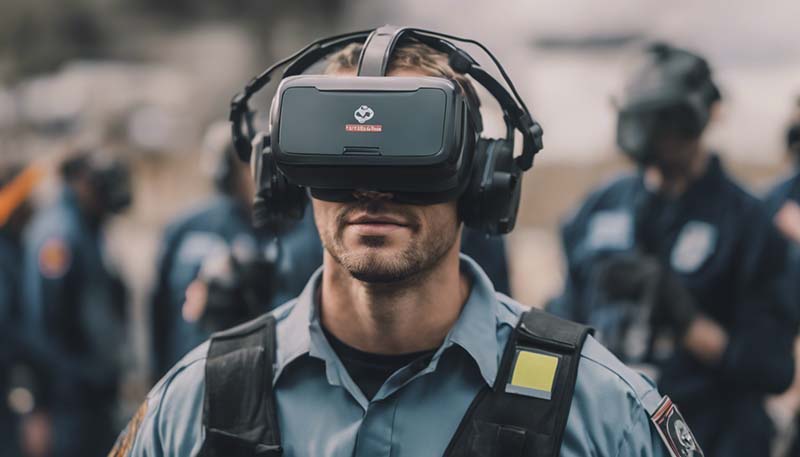The Role of VR in Emergency Response Training
The Role of VR in Emergency Response Training
Introduction
Virtual reality (VR) technology has made significant strides in recent years, offering new and innovative ways to train individuals in various fields. One area where VR has shown great promise is in emergency response training. This article will explore the role of VR in emergency response training, discussing its benefits, challenges, and future potential.
Understanding Emergency Response Training
Emergency response training is crucial for professionals who may be called upon to handle a wide range of emergencies, from natural disasters to terrorist attacks. Effective training prepares these individuals to make quick, informed decisions and to work effectively as a team under high-stress conditions.
The Benefits of VR in Emergency Response Training
1. Realistic Simulations
One of the key benefits of VR for emergency response training is its ability to create highly realistic simulations. Trainees can be placed in a variety of emergency scenarios, from fires to mass shootings, giving them the opportunity to practice their skills in a safe and controlled environment.
2. Cost-Effectiveness
Traditional emergency response training can be expensive, requiring the use of physical props, locations, and personnel. VR offers a more cost-effective solution, as it can simulate a wide range of scenarios without the need for physical resources.
Advertisement
3. Repeatability and Scalability
With VR, trainees can repeat scenarios as often as necessary, allowing them to refine their skills and learn from their mistakes. Additionally, VR simulations can be easily scaled to accommodate large groups of trainees, making it an efficient training solution.
4. Improved Decision-Making Skills
VR training allows trainees to experience the stress and pressure of an emergency situation, helping them to develop better decision-making skills. This can lead to faster, more effective responses in real-life emergencies.
Challenges of VR in Emergency Response Training
1. Technological Limitations
While VR technology has advanced significantly, there are still limitations in terms of graphics, interactivity, and user experience. These limitations can impact the realism and effectiveness of VR training simulations.
2. Hardware Costs
High-quality VR equipment can be expensive, which may be a barrier for some organizations looking to implement VR training programs.
3. Motion Sickness
Some individuals may experience motion sickness while using VR, which can limit their ability to participate in training sessions.
4. Integration with Existing Training Programs
Integrating VR into existing emergency response training programs can be challenging, as it requires a shift in training methodologies and the development of new curricula.
The Future of VR in Emergency Response Training
As VR technology continues to advance, its role in emergency response training is likely to grow. Improved graphics, interactivity, and user experience will make VR simulations even more realistic and effective. Additionally, as the cost of VR equipment decreases, more organizations will be able to adopt this technology for their training programs.
Furthermore, the development of more sophisticated VR training curricula and the integration of VR with other training methods, such as live exercises and classroom instruction, will enhance the overall effectiveness of emergency response training.
Conclusion
In conclusion, VR has the potential to revolutionize emergency response training by offering a safe, cost-effective, and realistic training environment. While there are challenges to overcome, the future of VR in emergency response training looks promising, with the potential to save lives and improve the effectiveness of emergency response teams.

Comment